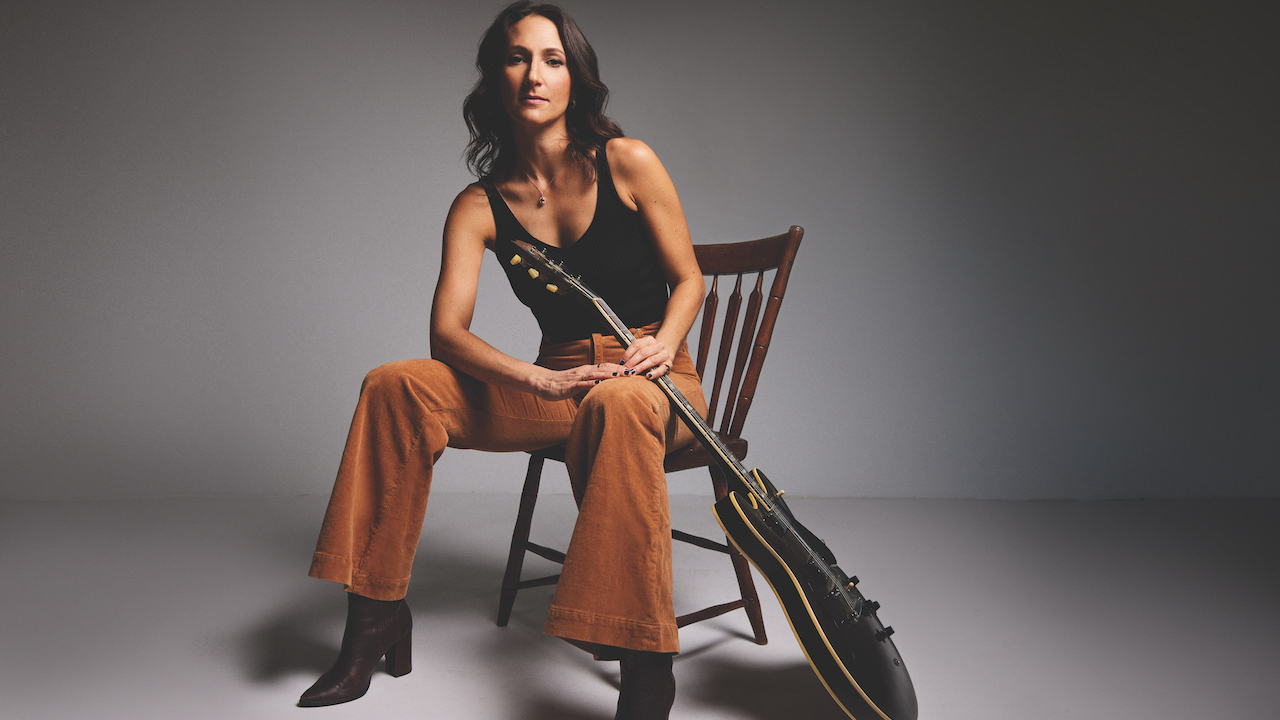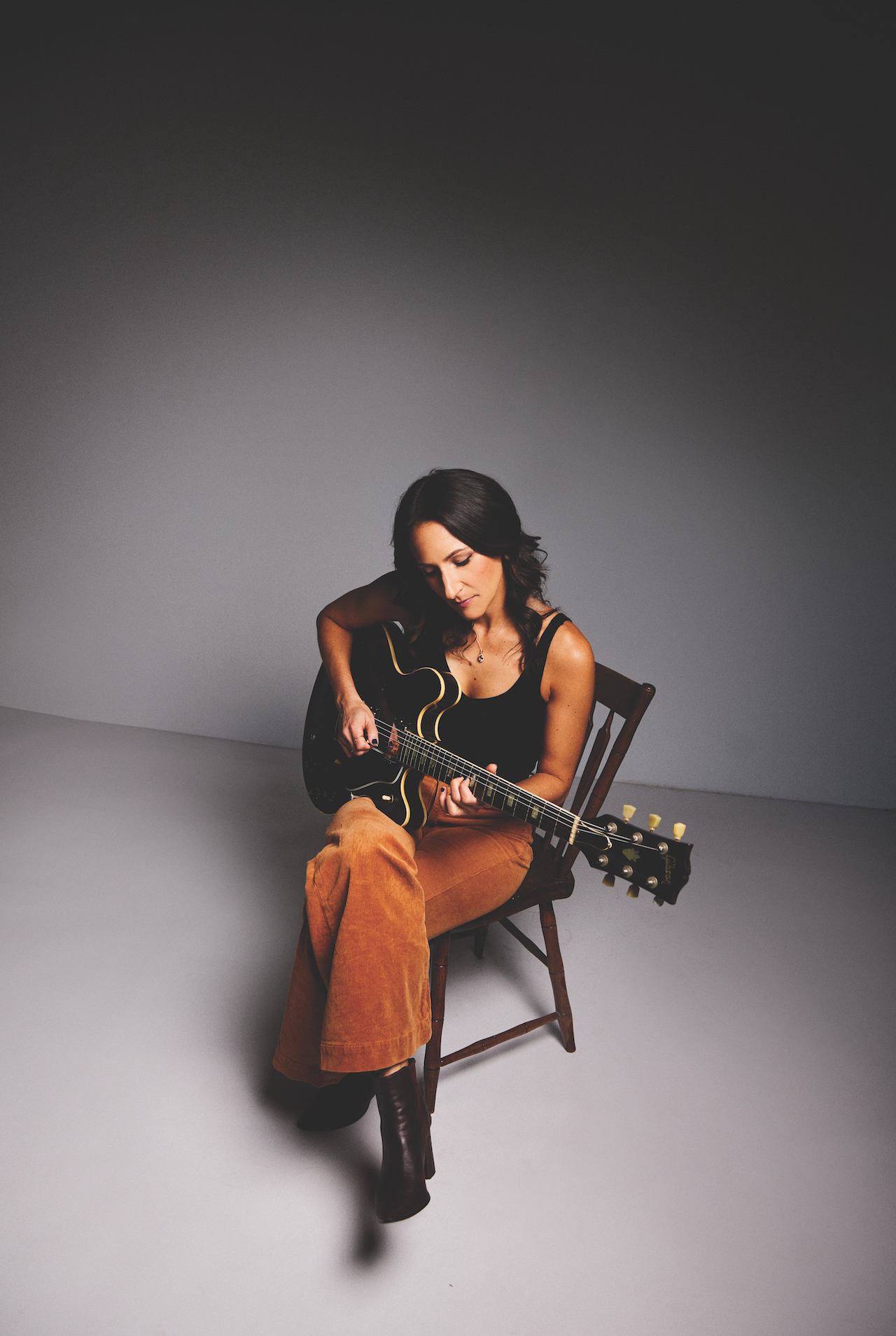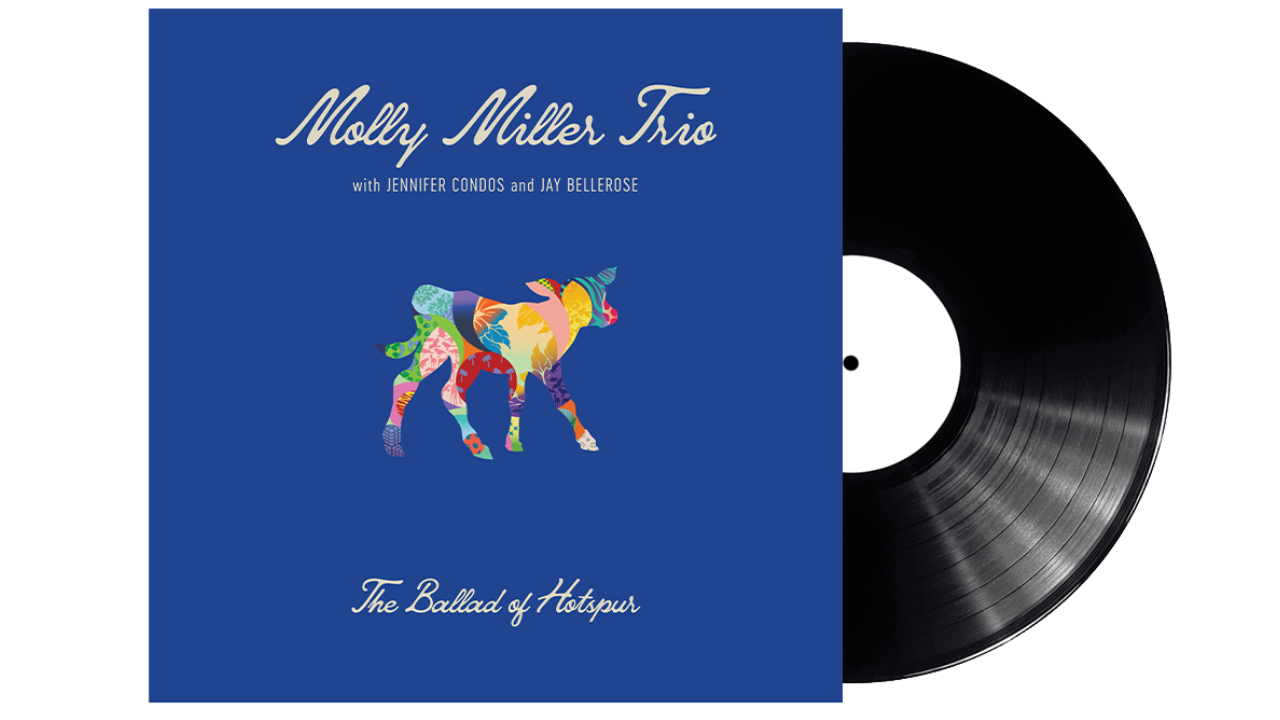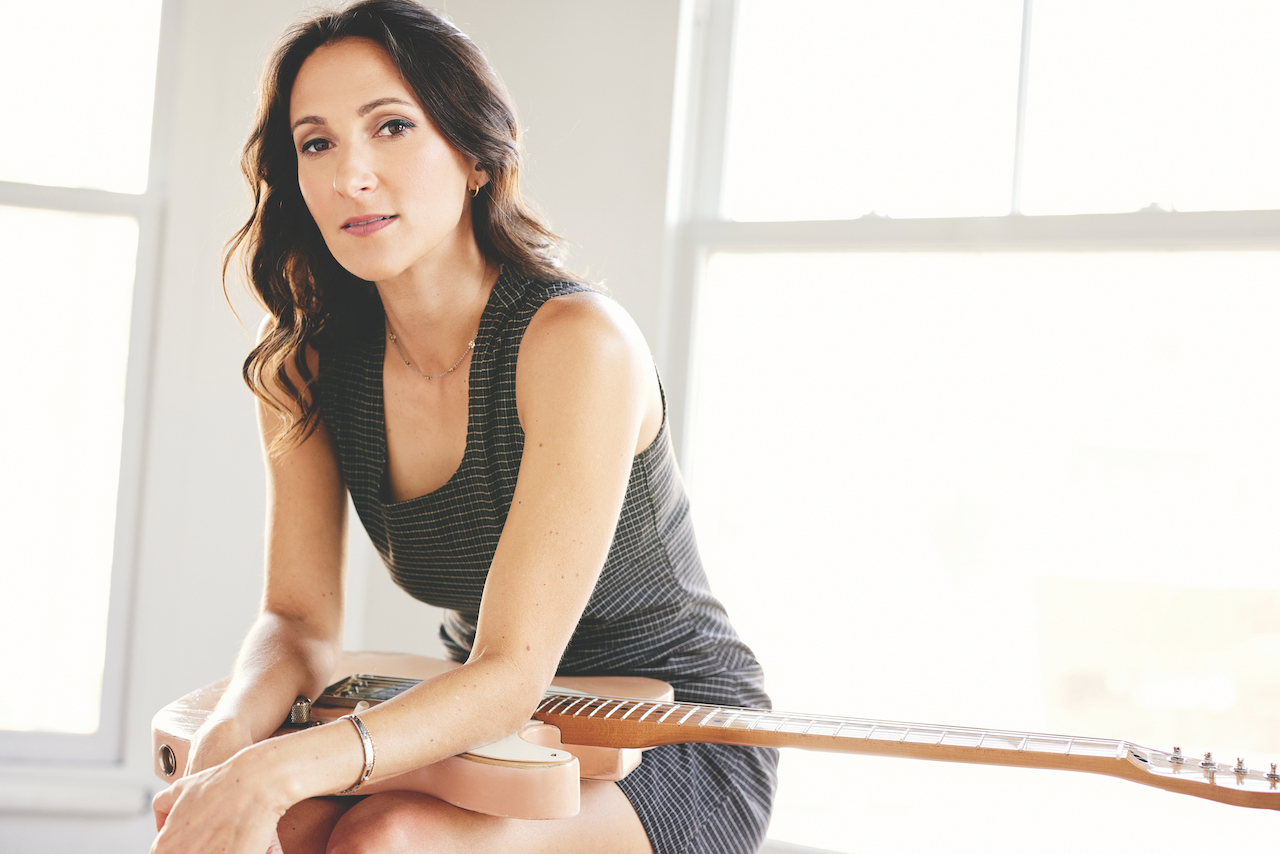“I’m a happier person when I’m not trying to sound like John Mayer or Wes Montgomery or George Benson. I get hired to be me, instead of those awkward moments where they say, ‘Can you sound like XYZ?’” Molly Miller on balancing jazz and Jason Mraz
Miller revels in her jazz chops on new album The Battle of Hotspur. But as this doctor of musical arts explains, it’s just one facet of her myriad guitar talents

Molly Miller is working overtime this summer. Yes, she’s reprising her role in pop star Jason Mraz’s Superband, on tour for his latest release, Mystical Magical Rhythmical Radical Ride, on which she also appears. But she’ll have to get there early as she’s also the opening act, performing with her Molly Miller Trio in support of their engaging new record, The Battle of Hotspur (Interrabang Records).
Recorded with her bandmates, bassist Jennifer Condos and drummer Jay Bellerose, it’s a vibrant collection of original, instrumental Americana jazz songs tinged with folk, surf rock and Ennio Morricone-inspired western soundscapes.
On its face, this may seem an unlikely musical pairing: a jazz trio opening for a major pop star. But Miller – who is also an adjunct professor of studio guitar at her alma mater, University of Southern California, where she earned a Doctorate in Musical Arts – doesn’t see herself as simply a jazz guitarist.
“Hendrix is the guy that got me into guitar,” she tells Guitar Player, speaking from her home in Los Angeles. “Sure, I’m a jazz guitarist, but that feels like it’s not the whole truth. It’s just a part of what I do.”
Miller began playing guitar at age seven, joining her siblings in a family band. She counts among her inspirations such disparate artists as the Beach Boys and Sister Rosetta Tharpe, the gospel legend and rock guitar pioneer on whom she would later write her dissertation.
Videos on Miller’s YouTube channel range from her beautiful solo guitar version of When You Wish Upon a Star (released on her 2020 album, Disney Guitar: The Molly Miller Sessions, as part of the Disney Peaceful Guitar series) to her trio playing a dynamite cover of J.J. Cale’s After Midnight and a host of other ingeniously arranged pop and jazz standards. (And if you’re looking for a lesson on CAGED theory, Miller’s YouTube tutorials can’t be beat.)
There’s a visceral and personal depth to Miller’s playing and songwriting on Hotspur, and her tone is big. On the cusp of embarking with her trio on a month-long series of dates preceding the Mraz tour, she took time out to chat with Guitar Player about practice, hybrid picking and trusting yourself as a guitarist.

The Battle of Hotspur almost sounds like it could be a recording of a live show.
”That was totally the goal. We wanted to make the record sound how it did live. Jason [Wormer, recording and mix engineer] actually went to one of our gigs and said, ’This is the first time I’ve ever recorded a band, mixed the record and gone to a show, and it all sounds the same,’ and I was, like, ’That’s what we wanted!’
Sure, I’m a jazz guitarist, but that feels like it’s not the whole truth. It’s just a part of what I do
“We recorded the whole thing in two days, and it wasn’t two crazy-long days. We’d do one or two takes, listen back to make sure everything sounded like we wanted it to, go back and do a couple more takes, and that was it. There are very minimal overdubs – maybe I had a note I didn’t like – but it’s pretty much exclusively a live record, except for some percussion and production.”
Your guitar sound is so full that it almost doesn’t sound like a trio at times. How did you get such a big tone?
“Jason is a guitar player. He brought his pedalboard and I brought mine, and he did a split at the top. I had two ’boards going to two different amps, so I could have two completely isolated sounds simultaneously. I was using my pedalboard on my Princeton ’65 reissue and Jason’s on a Vibrolux. One was set a little cleaner, closer to what I would do at a gig, and the other had more stuff on it. Then we’d blend the two sounds.
“He had different pedals than I did. I had the Strymon Flint for tremolo, EarthQuaker Devices Dispatch Master for reverb and delay – I used that one a ton – and Special Cranker overdrive, and the Chase Bliss Audio Dark World reverb. Jason’s board had a Diamond Compressor, a Flint on the ’70s reverb setting, slapback from the Malekko Ekko, the Keeley Monterey [Rotary Fuzz Vibe] and a modded Behringer Ultra Vibrato set to a slow rate.“
How about guitars?
“My 1978 Gibson ES-335 – that’s my baby. I used that and my Tele for most of the record. I used my goldtop P90s Les Paul on one song, Cine.”
A few of your songs give a nod to Ennio Morricone’s scores for ’60s westerns.
“Totally, though we didn’t want to be too on the nose. I thought of Mickey Baker, Booker T. & the M.G.’s, Dave Brubeck, plus Afrobeat – [Nigerian drummer and composer] Tony Allen’s drums definitely inspired 66 West. We’re nodding to the past while trying to make something relevant, but in a timeless sense.
Jen said, 'I want to make a make a western concept record,' and a bunch of the songs, like Orchids and Cowboys and Cine, were very much inspired by Morricone’s music, like [his score for the 1966 western] The Good, the Bad and the Ugly, and that kind of stuff.”

When you’re writing, do you start from a groove, or do you have a melodic idea first?
“I write in a couple of different ways. I play guitar every day, and I feel like I’m such a 'guitar player' where I sit down and explore the instrument, how a melody and harmony can interact. I love exploring that. So some of it is playing guitar and exploring, like Blues to Greens. Then there are songs that are coming from emotional places of me just sitting with my guitar, dealing with relationships or sadness stemming from the pandemic.
“But writing also comes from discovering. I love guitar and how chords sound and what happens if you bring the melody down to a different octave or you go to a new key. I think so much of learning on your instrument – and maybe it’s a metaphor for life – is about the exploration.
“Sometimes as a student I would be so goal oriented, like, ‘I have to learn all these scales.’ But how you really get better is by exploring. So, writing will be a combination of the discovery process and emotion for me, and trying to make sense of my feelings. I feel sometimes that playing guitar is way better than a therapy session. ‘Oh, I’m angry!’ You can exaggerate that on your instrument.
“Then some of the songs are written by Jen and I together. It’s pretty much split; half the record’s just my songs and half of it is Jen and me. But it’s funny that you say the 'groove' thing. Jen and Jay are a couple, and Jen has probably 500 Jay Bellerose grooves on her computer. She’ll put on a Jay groove and start writing and send me a section, and I’ll finish it. Then we all get into a room and make the song a real 'song' – you know, the arrangement.
I think so much of learning on your instrument – and maybe it’s a metaphor for life – is about the exploration
“Jay references Booker T. & the M.G.’s a lot, the sort of idea where they’re not necessarily each doing a crazy amount, but every little aspect is so important – how each player is playing their part, and just slightly differently, maybe, from section to section. That’s helping to tell a story. We figure out the climaxes and how we breathe together. The little nuances.”
The intro to 66 West has some fantastic interplay between you and Jay. It’s free time but feels composed, and the entire song arrangement is very different.
“That song was the most ’Frankenstein-ed’ together. Jen said to play something at the top, and I think I started doing this slow intro. Then Jay started playing, and it really became this interactive, dynamic, cinematic thing, where you see all this tension getting bigger.
“Then he suggested he start playing drums and I, out of time, allude to the melody, because we were thinking of these westerns where they’ll have these themes that keep coming back. So throughout the song, we play the theme multiple different ways: over a four-bar phrase, over an eight-bar phrase, out of time, in 3/4 and then in 4/4. It feels like the opus of the record.”

Hotspur is all original material, but last year you released Wild World, an EP of covers, and you often post videos of your trio performing cover songs. Did you take a different approach?
“I first just learn it and make sense of the harmony. It’s kind of the same way I write a song: I think about what’s the vibe, what’s the point I’m trying to get through. After Midnight is just swanky and cool. I ask myself, 'What tools can I use in arranging to push the song forward and put my spin on it?' Maybe a different harmony idea, or in [Cat Stevens’] Wild World, for example, we have this open, psychedelic section because, well, it’s a wild world, you know? [laughs]”
You have a doctorate in music and know so much, yet still have a very natural, musical style. How do you cross the bridge from simply having knowledge to actually making music with it?
“A couple of things. I’m really focused on melodies, and when I prep for a record, when I’m learning a song or practicing, I do record myself and listen back. And I’m not listening for cool scales; I’m listening for, 'Is there a clear melody? Is there a story being told or motifs that are being pushed?'
“One of my favorite players is Grant Green; he’s the one that got me into jazz. His playing is so conversational, and that’s always something that I loved and that I strive for, when you feel like someone’s talking to you. I want it to be conversational, where you’re being told a story, essentially.

“And I practice that way, too; I’ve spent enough time on my instrument where, sure, I know all the scales all over my guitar, and I can play all the modes of harmonic minor, melodic minor, whatever. I can do that, but I never want to make it sound like I’m practicing that stuff, because I don’t like the way that sounds. I want it to be emotional.
“So I listen back and try to be honest with myself: not how fast am I playing, but am I coherently expressing myself to the best of my abilities? That is melody-driven. Melody and storytelling: Those are the things I think about.
“Even when I’m practicing scales, I’m not practicing, like, This is Dorian. Here’s Phrygian Dominant. I’m not thinking about that; I’m thinking about how do these scales – and these sounds, more than scales – interact with each other, and how can I create melodies with them?
“What notes are shared, what tensions live between them, where if I go from one scale to the next, if I move up a half step, is that a cool way to connect them in a coherent melodic way, versus, 'Let me shred this scale as fast as possible'?”
Are you listening for other specific things when you record yourself?
“I try to play full songs so I can hear how I’m playing the melody, how I’m soloing, how I’m making the song breathe. It’s more honest than anything else; it’s like looking into a mirror.
“But when I listen back, it’s not about bashing myself. I think that’s something that’s taken me time. It really is to discover the things that I find that I like, the things that I may be overdoing or that I should dig deeper into. I want to be playful and interactive in the way I play, whether I’m alone or with a band. I want to practice the way I’m going to perform.”
When you’re improvising, how do you turn off that critical part of your brain?
My goal is to be as honest as I can about who I am. And my music is a lot better that way
“It’s almost like that’s why I play music, because you have to be hyper-present. When I practice and record myself and I’m listening back, I try to listen as if it’s not myself. I think when you’re listening to someone else, they’re allowed to have mistakes. You may not even hear them as mistakes; they’re just playing music. So I try to listen to myself in those terms. It’s not like, 'I made this mistake, the whole thing’s screwed!' When I can let go of it, that allows me to be present.”
You integrate hybrid picking into your playing along with single-note lines and strumming in a very seamless way. Is that something you think about?
“It happens really naturally now. It started because I was taking lessons with Bruce Forman at USC, and I was doing this thing where I would comp with my fingers because of the warmth, and then grab my pick if I was going to solo. And he said, ’Why are you two different people? You should have one voice.’ So I started trying to just keep my pick in my hand, doing solo chord-melody arrangements.
“I wanted to be able to have my pick for soloing or some single-note stuff, and yet still have the warmth of my fingers for things like comping. I studied a lot of fingerstyle – Elizabeth Cotten, Memphis Minnie, Chet Atkins. I also spent four years playing classical, and integrating the pick into it felt like it gave me so much more freedom than I could experience with just fingerstyle or just picking.”

To touch on your playing with Jason Mraz, how does playing pop music affect your jazz playing, or vice versa?
“I feel like it all informs each other. I find the more I do not compartmentalize and just let these things inform each other, the more true I can be to myself and my sound.
“And I’ve noticed how it’s been so much more fruitful, because my goal is to be as honest as I can about who I am, and my music is a lot better that way. My guitar playing is a lot better that way, and I think I’m a happier person when I’m not trying to sound like John Mayer or Wes Montgomery or George Benson. I’m me. And I get hired to be me then, instead of those awkward moments where they say, 'Can you sound like XYZ?' Instead they say, 'Can you sound like Molly Miller?' And I’m, like, 'Yes!'”
Get The Pick Newsletter
All the latest guitar news, interviews, lessons, reviews, deals and more, direct to your inbox!
Jeff Jacobson is a guitarist, songwriter and veteran music transcriber, with hundreds of published credits. For information on virtual guitar and songwriting lessons or custom transcriptions, reach out to Jeff on Twitter @jeffjacobsonmusic or visit jeffjacobson.net.
"This 'Bohemian Rhapsody' will be hard to beat in the years to come! I'm awestruck.” Brian May makes a surprise appearance at Coachella to perform Queen's hit with Benson Boone
“We’re Liverpool boys, and they say Liverpool is the capital of Ireland.” Paul McCartney explains how the Beatles introduced harmonized guitar leads to rock and roll with one remarkable song













